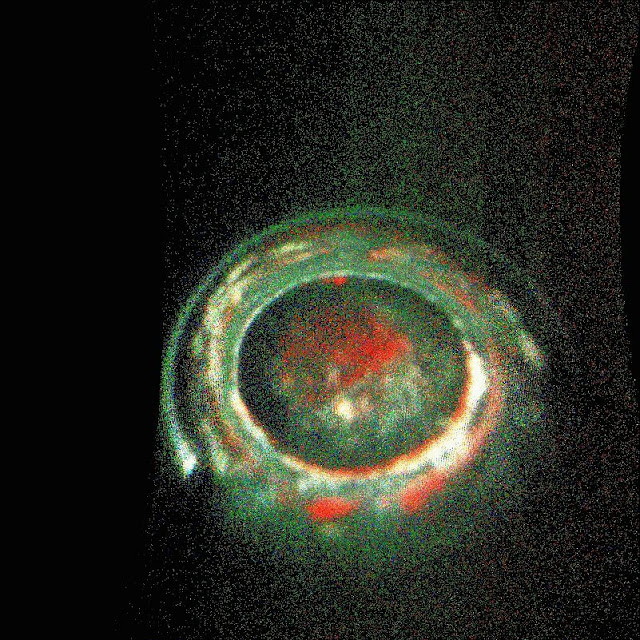This image from NASA's Wide-field Infrared Survey Explorer, or WISE, highlights several star-forming regions. There are five distinct centers of star birth in this one image alone. Star-forming nebulae (called HII regions by astronomers) are clouds of gas and dust that have been heated up by nearby stars recently formed from the same cloud.
The largest, brightest cloud, in the upper right is known as Gum 22. It's named after Colin Gum, an Australian astronomer who surveyed the southern hemisphere sky in the early 1950's looking for star-forming regions like these. He catalogued 85 new such regions, named Gum 1 to85 (Gum Crater on the moon was also named in his honor).
Going counter-clockwise from Gum 22, the other catalogued nebulae in the image are Gum 23 (part of same cloud as 22), IRAS 09002-4732 (orange cloud near center), Bran 226 (upper cloud of the two at lower left), and finally Gum 25 at far lower left. There are also several smaller and/or more distant regions scattered throughout the image that have yet to be catalogued. Most of the regions are thought to be part of our local Orion spiral arm spur in the Milky Way galaxy. Their distances range from about 4,000 to 10,000 light-years away.
Notice the very bright green star near the lower right portion of the image. You can tell it's a star because it appears to have 'spikes' sticking out of it (diffraction spikes like these are an optical effect caused by the structure of the telescope). Bright stars in WISE images are typically blue, so you know this one is special. Known as IRAS 08535-4724, it's a unique type of stellar giant called a carbon star. Carbon stars are similar to red giants stars, which are much larger than the sun, glow brightly in longer wavelengths, and are in the late stages of their lives. But they have unusually high amounts of carbon in their outer atmospheres. Astronomers think this carbon comes either from convection currents deep within a star's core, or from a nearby neighboring star, from which it is siphoned. Recent evidence suggests that a carbon star like this one will end its life in an extremely powerful explosion called a gamma-ray burst, briefly outshining the sun a million trillion times.
The colors used in this image represent specific wavelengths of infrared light. Blue and cyan (blue-green) represent light emitted at wavelengths of 3.4 and 4.6 microns, which is predominantly from stars. Green and red represent light of 12 and 22 microns, respectively, which is mostly emitted by dust.
Image Credit: NASA/JPL-Caltech/UCLA
Explanation from: https://photojournal.jpl.nasa.gov/catalog/PIA14105































